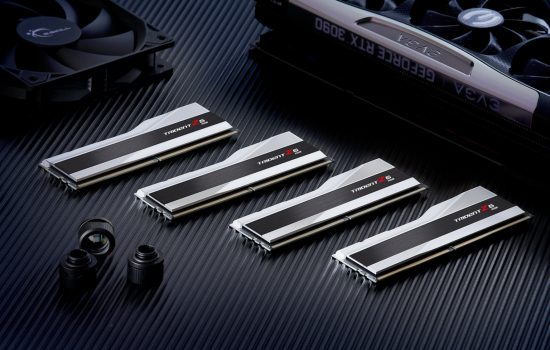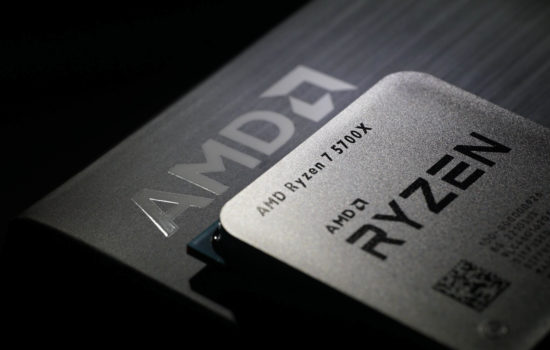Gigabyte AI TOP 100E SSD
The boom (or bubble?) around AI has brought many things, and among them interesting news for those missing SSDs based on MLC and SLC NAND Flash which was more pricy but had better performance and crucially, much longer lifespan so you didn’t have to worry about wearing out the SSD. That said, Gigabyte is launching an SSD that is officially designed for AI applications, but not just for them – its main asset is precisely SLC recording.
Gigabyte has added new NVMe modules dubbed AI TOP 100E to its SSD offerings, which the company says are designed to handle the most demanding tasks and improve the responsiveness of AI applications. The supposed connection of the SSDs to the AI field is apparently that these modules are intended to serve as a additional memory space (essentially a swap space) to supplement the GPU’s local memory, when it is no longer sufficient for the largest models.
What makes it special is that this SSD is one of the few on the market based on SLC NAND, which means that that only one bit is stored in each cell, thus requiring the cell to distinguish between only two voltage levels. This means that while the chip’s capacity os reduced, its ability to both reliably store data and reliably read it (even with increasing wear through rewrite cycles) increases enormously.
NAND memory famously suffers from the disadvantage that each overwrite (more precisely, it’s the required erasing of the block that is to be rewritten that causes this) eats up some of its lifespan and it gradually loses the ability to reliably maintain the stored voltage level and thus your data. This is why SSDs typically have a warranty of only 600–1500 full overwrite cycles (for TLC NAND), or even just 300 for QLC NAND. SLC NAND with just two voltage levels (instead of eight for TLC or 16 for QLC) will maintain reliability for much longer, typically calculated to be several tens of thousands or hundreds of thousands of rewrites.
180× longer lifespan
Gigabyte’s AI TOP 100E SSD represent a return to this old era of high erase cycle lifespans. It’s a modern M.2 module with a PCI Express 4.0×4 interface that is offered in 1TB or 2TB capacities, so it’s not suffering from the small capacities of historical SLC SSDs. Gigabyte does not specify the NAND used. However, it is 3D NAND, so these are not the old planar SLC chips. Presumably the chips used are not manufactured as SLC dies out of the factory, as today basically only TLC and QLC dies are in mainstream production. Gigabyte likely uses such modern dies, but specifically their embedded derivatives that writes only one bit per cell instead of multiple bits.

Using TLC or QLC dies in this manner should functionally be the same as SLC NAND and the performance and lifespan benefits should be similar. Today’s SSDs actually commonly use such a pseudo-SLC mode on a portion of their TLC or QLC NAND for the so-called write cache. So in a way this Gigabyte SSD may simply be said to be permanently using the entire capacity of the NAND in a write cache-like mode and never converting any data to TLC or QLC mode of store.
The claimed lifespan and warranty is indeed in the realms of SLC dirves, Gigabyte states for the 1TB module 109,500 TB of written data or 109,500 total drive rewrites (the drive has a capacity of 1024 GB) with a five-year warranty are guaranteed. The 2TB model support the same number of rewrite cycles, with a total guaranteed write quota of 219,000 TB. This is hundreds of times more than comparable TLC SSDs, for example the WD Blue SN5000, which we wrote about recently, guarantees 600TB of total writes for the 1TB model. Compared to that drive, this Gigabyte SSD has 183 times more total write warranty.
Modern performance with PCIe 4.0 ×4
We don’t know what controller is employed, but it uses LPDDR4 cache. Gigabyte quotes sequential read speeds of up to 7000 GB/s and write speeds of up to 5900 GB/s for the 2TB model, and we should note that in this case, roughly this level of write speed should actually be sustainable all the time, unlike with all conventional SSDs, as this module does not work with SLC cache, it always writes everything in SLC mode.
Gigabyte unfortunately doesn’t list IOPS values for their SSDs, but the performance should hopefully be very decent as SLC recording has historically also had better performance characteristics than TLC and MLC. So compared to some older embedded or server SLC SSDs, in this case the performance should be fully up to today’s benchmarks (if we leave PCIe 5.0 modules with their higher peak sequential data rates aside).

The modules will need to be well cooled, because according to the specifications they can consume up to 11 W when writing and up to 10.9 W when reading, but in idle mode they should have a well behaved power consumption (3–30 mW in power saving modes).
So these SSDs are likely to be a tempting choice for those who still haven’t got used to the fact that SSDs have a limited lifespan, and that it’s possible to wear them out by overwriting too often. AI TOP 100E modules could generally come in handy in situations where the drive is constantly being overwritten. Or if your tasks require a huge amount of RAM and you need an SSD that can provide a large swap space but also survive a constant use of that swap space (basically, poor man’s Optane?). It could probably also be good for working with large sized video files, for example for intensive video cutting and editing, where each task easily consumes an erase cycle of a large portion of the SSD’s cells by writing huge video files. The ability to keep write speeds persistenly at the same high rate may also be advantageous for video editing work.
The price will be higher
However, you will have to pay a price for these advantages, this SSD is bound to be quite a bit more expensive than regular models. In fact, when making such a SSD, you need at least 3 TB of TLC NAND (or 4 TB of QLC NAND) to get 1 TB of capacity in pseudo-SLC mode. A 2TB module will therefore have a manufacturing cost closer to an 8TB conventional SSD. Moreover, it will be a product for a relatively limited market, so the various secondary costs for development, testing and so on can probably also drive the cost (and price) higher.
These SSDs are not yet available in stores, so we don’t yet know what the retail prices will be.
Sources: TechPowerUp, Gigabyte (1, 2)
English translation and edit by Jozef Dudáš
⠀
- Contents
- Gigabyte AI TOP 100E SSD











